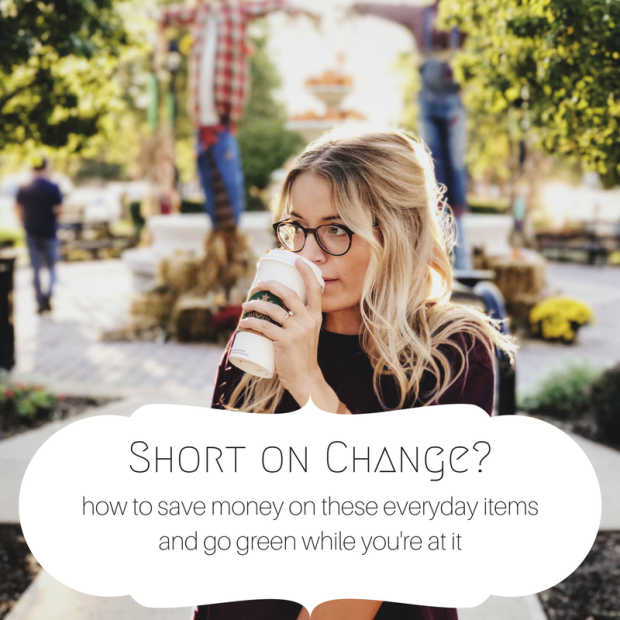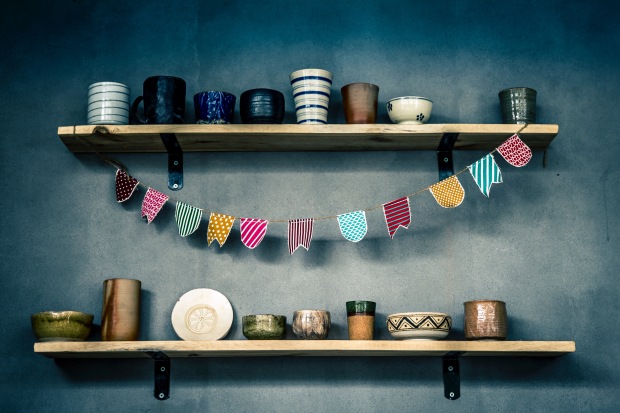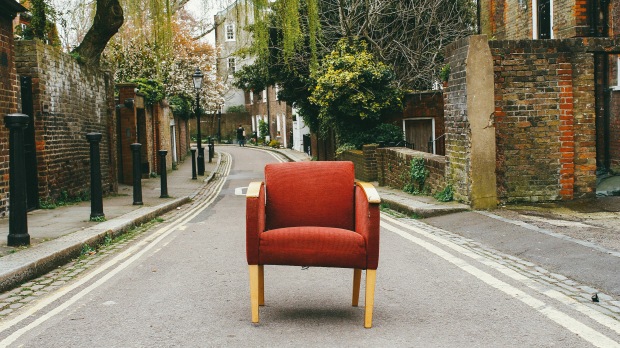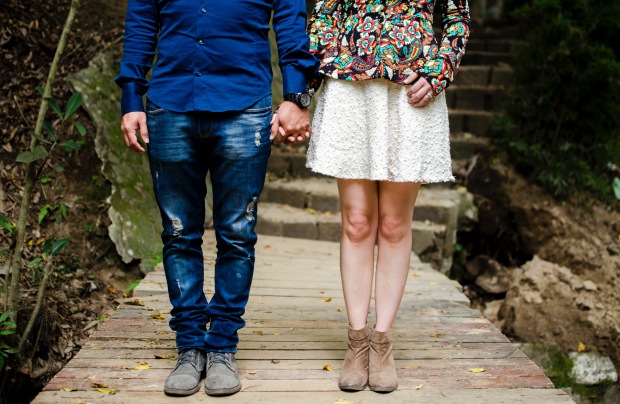
When I chose to follow a career in social services I can’t even count how many people pulled me aside for a ‘serious talk about money’ and asked me if I realized that I was choosing to be poor to follow my passion. I can’t say I actually realized it perse, but the rebel in me was always quick to say that I was fine with it, money doesn’t buy happiness, I am going to make a difference, and I’d rather pursue what I love than hate pursuing money. Turns out I was right. I love my job. My boyfriend makes fun of me saying that I am the only person he knows who goes to work happy on Mondays. But I was also wrong. I’ve been tight on cash and that’s no fun. I’ve been stressed thinking ‘i wonder if that bill doesn’t exist if i just don’t open the envelope’. And I’ve worked my tuckus off trying to get out of debt. Along the way, I’ve found a few answers to that persistent need to figure out how to save money that work. Most of them I found by accident just by pursuing my dreams to go green one step at a time.

First up, coffee. Mmmm. If you’re an early morning [ or any other time of the day ] caffeine beast like I am this one may sound scary. But I’m not asking you to swear off. Just get a little more strategic and make it at home. Even the most avid recycler gets tired of carrying around an empty coffee cup looking for a recycling bin after finishing a cup of java-to-go and eventually considers tossing the cup in the garbage instead.
So instead, try using a reusable cup that you enjoy, that speaks to your soul, that you are likely to hang onto post sippage and bring home for tomorrow. When buying your coffee in the grocery store try looking for organic, or a little logo saying ‘fair trade’, ‘local’, ‘ethically sourced’, or ‘eco’ on the package.
And then watch your savings add up. A Starbucks bevvie will cost you upwards of $5 per, and even cheaper coffee from Tim Hortons [ holla Canadians! ] or McDonalds costs around $2 a pop. Compare that to at-home brew where you can conservatively hope for 30 – 50 cups of coffee per $10 package of grounds. Don’t tell my mom that I had to use my calculator to figure out that runs you a total of about $.20 – $.33 per cup.

Reusable coffee cups aren’t the only dishes you need. If you are in the business of being human, you need to eat. Which means, unless you’re a boor, you need cooking utensils, pots, pans, and dishes to eat off.
You are welcome to go to Walmart and pick up the newest greatest printed dish set. But if you’re ever stepped foot in a thrift store, you are likely well aware that you don’t need Walmart. There are plenty dishes to go round. I personally have a dishes problem – I love unique and beautiful dishes so much that I have a collection of beauts that I found in thrift stores around my city. I even started painting thrift store dishes in hopes of increasing their curb appeal [ see my diy glass painting tutorial here: diy glass painting tutorial ]. Thrift store dishes cost pennies compared to home stores, and you have the opportunity to express your own style and create your own sets with your unique finds. I’ve also considered myself beyond lucky to find things like cast iron pans for $5 [ saving a whopping $95 sometimes when you compare this to the cost of a new one ].

Furnishings can kill any savvy budgeter’s vibe – especially if you’re looking for quality items that will last. People are chit chatting it up about fast fashion and how clothing items are filling our landfills at alarming rates, and clothing isn’t made to last by the majority of name brand stores anymore. But people don’t tend to talk about furnishings. Go to any landfill and I bet it is easier to pick out a couch, or table, than a bag of clothing. [ don’t worry – I agree that fashion waste sucks. But we often forget to talk about the wastefulness of home decor trends and I think they are worth mentioning ].
For furnishings I want to suggest 2 possibilities:
Possibility #1 – Spend more money now on higher quality furnishings that will last you longer, and save money long term. If you buy a cheap couch, it will fall apart. It will also fall out of fashion. And you will be looking for some way to dispose of it before too awful long [ requiring the purchase of another new couch and starting the cycle once again ].
Possibility #2 – Buy second hand [ I know – big surprise behind door #2 ]. Buy vintage, buy someone else’s high quality item that they just don’t like anymore, buy it ugly and remake it yourself, buy eclectic and design a home that oozes comfort and speaks to your soul. This may require a little extra effort and creativity and may make you a little happier than possibility #1.
If you think this could be your jam, but you need some inspiration try;
Alice in Scandiland – “Mother, maker, picture taker, I’m blogging about my love for interiors, pretty things, makes and musings in beautiful Cornwall with my little family.”
I find oodles of inspiration in the photos posted on Alice in Scandiland. Her eye for color, shape, space and design is incredible.

Clothing & jewelry are tough ones. I know the pain. It’s next to impossible to stay on trend and fashionable when trends and fashion change every minute. I feel like I need to add a disclaimer on this one as well – I am not that trendy or fashionable. Shocker. I know. Between being too busy and happy to care, and serious avoidance of the mall, I sometimes just forget to give a shit. But if you are into caring, or if you have curated some serious style and want to ensure you have an idea of how to go green and how to save money while you keep up with your fashionable sense, I’ve got good news. You have a TON of options.
Thrift it – you knew I’d say that.
Fix it – if you have just ripped through a pair of jeans [ holla to our thunder thighs and real life ripped knees ] or lost a button or grown an inch and need to let out a seam, haul out the sewing machine and scrap fabric and buttons and zips and your grandma or friend if you need a little help and fix it. Same goes for accessories.
Trade it – Do you know equally awesome and stylish people? Host a clothing / accessory swap.
Try doing without – Walk away from that new tee and see if you still ‘need’ it in a week. Busted a pair of jeans but own 10 other pair? Try not replacing it and see if that sucks. You may be just fine without it and your ‘need’ may all be a figment of your imagination before you know it.
Rediscover it – Dig deep in your closet and jewelry / trinket box and see what lovelies are hiding out that you’ve forgotten about. Can you love them again?
Remake it – If you can’t love it again, try giving it an upgrade. Lengthen a shirt, or add some lace, dye it, shorten a skirt, change up the buttons, whatever it takes. Unleash your inner creative genius and see what happens.
If you are looking for some inspiration on this one may I suggest;
Refashion Nation – “Curated by Sheri Pavlovic, the award winning DIY diva behind Confessions of a Refashionista, Refashion Nation aims to provide an inspirational resource of links to upcycled DIY clothing & accessory tutorials + thrifty outfit ideas for those wanting fabulous, affordable, unique style without supporting the growing phenomenon of cheap, unethically produced “fast fashion”.”

And finally, food. Let’s face it. Food waste sucks. Between the environmental costs of farming, transportation, packing and storage that were never required if you weren’t going to eat it, and the gasses that are released by rotting foods in the dump, this one’s a doozy and we are all guilty [ seriously, me too ].
If you want to go green and save money on food waste, it’s [ somewhat ] simple:
Grow what you can … Buy what you need … Eat what you buy … Compost what you waste
Try to avoid ridiculous packaging, and try eating a little less meat [ animal agriculture has major environmental costs attached to it ]. Plan meals and only buy what you plan to eat. Forget about ideals on this one – I know you *want to be the person who eats a salad a day, but if you won’t follow through, it’s ok to be real with your food.
If you decide to start any of these tricks to grow new habits, let us know how it turns out!
Cheers for the groovy shoutout =O) I’m loving your fantastic tips and will be featuring this fab post on Refashion Nation soon! ❤